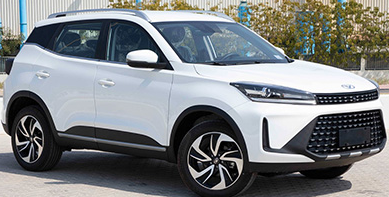For car buyers navigating the SUV market, terms like “subcompact” and “compact” can be confusing. A common question arises: Is a subcompact SUV smaller than a compact SUV? The short answer is yes—but the differences go beyond just size. Below, we break down their core distinctions, plus highlight a standout subcompact SUV: the Kaiyi X3 PRO.
1. Core Difference: Size (The Most Obvious Factor)
Subcompact SUVs are explicitly designed to be smaller than their compact counterparts, and this shows in hard numbers:
- Length: Subcompact SUVs typically range from 157 to 170 inches long. Compact SUVs, by contrast, stretch 170 to 183 inches—adding 10+ inches in many cases. This shorter length makes subcompacts easier to park in tight city spots or navigate narrow streets.
- Width & Height: Subcompacts also tend to be slimmer (65–70 inches wide vs. 70–75 inches for compacts) and slightly lower, further enhancing their maneuverability in urban environments.
- Wheelbase: The distance between the front and rear wheels (a key factor in interior space) is 98–105 inches for subcompacts, while compacts have a 105–112-inch wheelbase. This gap directly impacts passenger and cargo room.
2. Secondary Differences: Space, Performance, and Use Cases
Size dictates how these two SUV types serve drivers:
- Interior Space: Compact SUVs offer more rear legroom (often 36–39 inches vs. 33–36 inches in subcompacts) and cargo capacity (25–35 cubic feet behind the rear seats, vs. 15–25 cubic feet for subcompacts). This makes compacts better for families or frequent road trips.
- Performance: Subcompacts usually have smaller engines (1.0L–1.5L turbocharged) for better fuel efficiency (30–35 MPG combined), while compacts may use 1.5L–2.0L engines for more power (useful for highway merging or towing light loads).
- Use Case Fit: Subcompacts shine for urban commuters, single drivers, or small families who prioritize agility and fuel savings over maximum space. Compacts suit those who need extra room but still want SUV versatility.
3. A Standout Subcompact SUV: Kaiyi X3 PRO
If you’re leaning toward a subcompact SUV—drawn to its size, efficiency, and affordability—the Kaiyi X3 PRO is a top choice. Here’s why it stands out:
- Perfect Subcompact Dimensions: At 167.7 inches long and 69.7 inches wide, it’s easy to park in city garages or squeeze into tight parallel spots, yet its 102.4-inch wheelbase maximizes interior space (34.8 inches of rear legroom) for a subcompact.
- Efficiency & Practicality: Powered by a 1.5L naturally aspirated engine paired with a 5-speed manual or CVT, it delivers 32–34 MPG combined—ideal for daily commutes. Its 18.3 cubic feet of cargo space (expandable to 45 cubic feet with rear seats folded) handles groceries, luggage, or small outdoor gear.
- Value & Features: Starting at an affordable price point, the X3 PRO doesn’t skimp on essentials: a 10.25-inch touchscreen with Apple CarPlay/Android Auto, rear parking sensors, and a comfortable fabric interior. It balances the “small SUV” advantage with everyday convenience.
Final Takeaway
Subcompact SUVs are absolutely smaller than compact SUVs—and this size difference makes them a smart choice for drivers who want SUV style without the bulk. For a subcompact that nails maneuverability, efficiency, and value, the Kaiyi X3 PRO checks all the boxes, proving that “smaller” doesn’t mean “less capable.”

